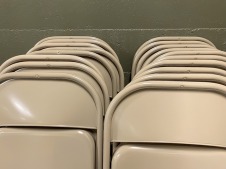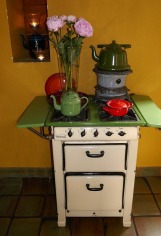A Talent That Is Remarkable
Exceptional writers have exceptional memories. Their talent to evoke in exact detail written images of the places, people, and events they recall is remarkable. Their writing is vivid and immensely readable. It conveys the sense of ”What I am telling you really happened” that you and all other memoirists would like their work to convey.
Most good writers find their richest material in their past. Writer after writer reports that. I believe it was John Updike who said he had all the material he would ever need by the age of twelve. No one knows why there is such a strong connection between breadth, depth, and accuracy of memory and writing skill.
 Every memoirist, (as well as every writer of fiction and personal essays and every poet and playwright) should strive to make that attainable talent to evoke the past a part of their repertoire of skills. They can then call on that talent every day as they compose, and it will bring their writing vividly to life.
Every memoirist, (as well as every writer of fiction and personal essays and every poet and playwright) should strive to make that attainable talent to evoke the past a part of their repertoire of skills. They can then call on that talent every day as they compose, and it will bring their writing vividly to life.
Exemplar: Aunt Sarah’s Living Room in 1948 as I Remember It
Aunt Sarah’s 1948 living room was wonderfully cluttered. On a gorgeous filigreed silver tray– catching your eye first–was a herd of delicate colored glass figurines of unicorns, deer, bears, tigers and leopards–red, pink, orange, green, and blue that stood in mute silence on glass shelves in a five-foot tall unbalanced glass case that rattled when anyone came too close–and a collection of miniature porcelain tea cups and saucers that seemed so delicate that a careless breath would dislodge them and send them crashing to smithereens at your feet. There were thick beige and red throw-pillows soft as balls of cotton scattered on the enormous plush sofa and on the neighboring recliner that through years of use had acquired the shape of Aunt Sarah’s body, and two large upholstered straight-back chairs. The faint path visible in the carpet leading in from the front hall was beginning to wear more noticeably this year.
There was a paisley ottoman and a footrest that you could trip over if you weren’t careful–or even if you were–and a glass coffee table that it was advisable to guard your shins from. In a corner lived a noisy parakeet that spent its every waking hour pecking at the door of its cage–to no avail.
 There were not enough living room chairs to go around when the full family came over, but there were the dining room chairs to carry in and also for an overflow crowd there were gray metal fold-up chairs stenciled on the back in white “Property of Ebenezer Baptist Church.” Aunt Sarah stored them in the hall closet hidden behind her prized full-length fur coat, and was embarrassed for strangers to see them, for fear they believe the impossible, but conceivable–that she had pilfered the chairs from that house of God.
There were not enough living room chairs to go around when the full family came over, but there were the dining room chairs to carry in and also for an overflow crowd there were gray metal fold-up chairs stenciled on the back in white “Property of Ebenezer Baptist Church.” Aunt Sarah stored them in the hall closet hidden behind her prized full-length fur coat, and was embarrassed for strangers to see them, for fear they believe the impossible, but conceivable–that she had pilfered the chairs from that house of God.
Lamps were everywhere. Aunt Sarah was a believer in bright lighting because in her words, “You have only one pair of eyes and they must be preserved.” There were gold floor lamps with shades still in their clear plastic wrappings, large, heavy, orange table lamps, and a miniature blue and white Little Bo Peep lamp on a tiny wooden platform that gathered dust on the wall over the upright piano, a piano around which a family sings together being a virtual necessity in a Welsh home.
A plastic fern decorated, as well as it could, the mahogany credenza next to the long, low radiator that from morning to night during the brutal Midwest winters and on chilly spring nights clanged, clanged again, and sputtered steam. The walls were papered in a design of vivid red and alluring pink roses with curved green stems.
 On a kitchen wall, above the old serviceable stove, was fastened an Elgin clock that ran fast, forcing everyone to subtract twenty-two minutes a day if they wished for some reason to be accurate, and in the corner of the living room, close to the large drafty window fronting Austin Avenue, was an impressive century- old grandfather clock whose big bronze pendulum, to the entire family’s collective memory, had never moved.
On a kitchen wall, above the old serviceable stove, was fastened an Elgin clock that ran fast, forcing everyone to subtract twenty-two minutes a day if they wished for some reason to be accurate, and in the corner of the living room, close to the large drafty window fronting Austin Avenue, was an impressive century- old grandfather clock whose big bronze pendulum, to the entire family’s collective memory, had never moved.
© 2023 David J. Rogers
For my interview from the international teleconference with Ben Dean about Fighting to Win, click the following link:
Order Fighting to Win: Samurai Techniques for Your Work and Life eBook by David J. Rogers
or
Order Waging Business Warfare: Lessons From the Military Masters in Achieving Competitive Superiority
or

